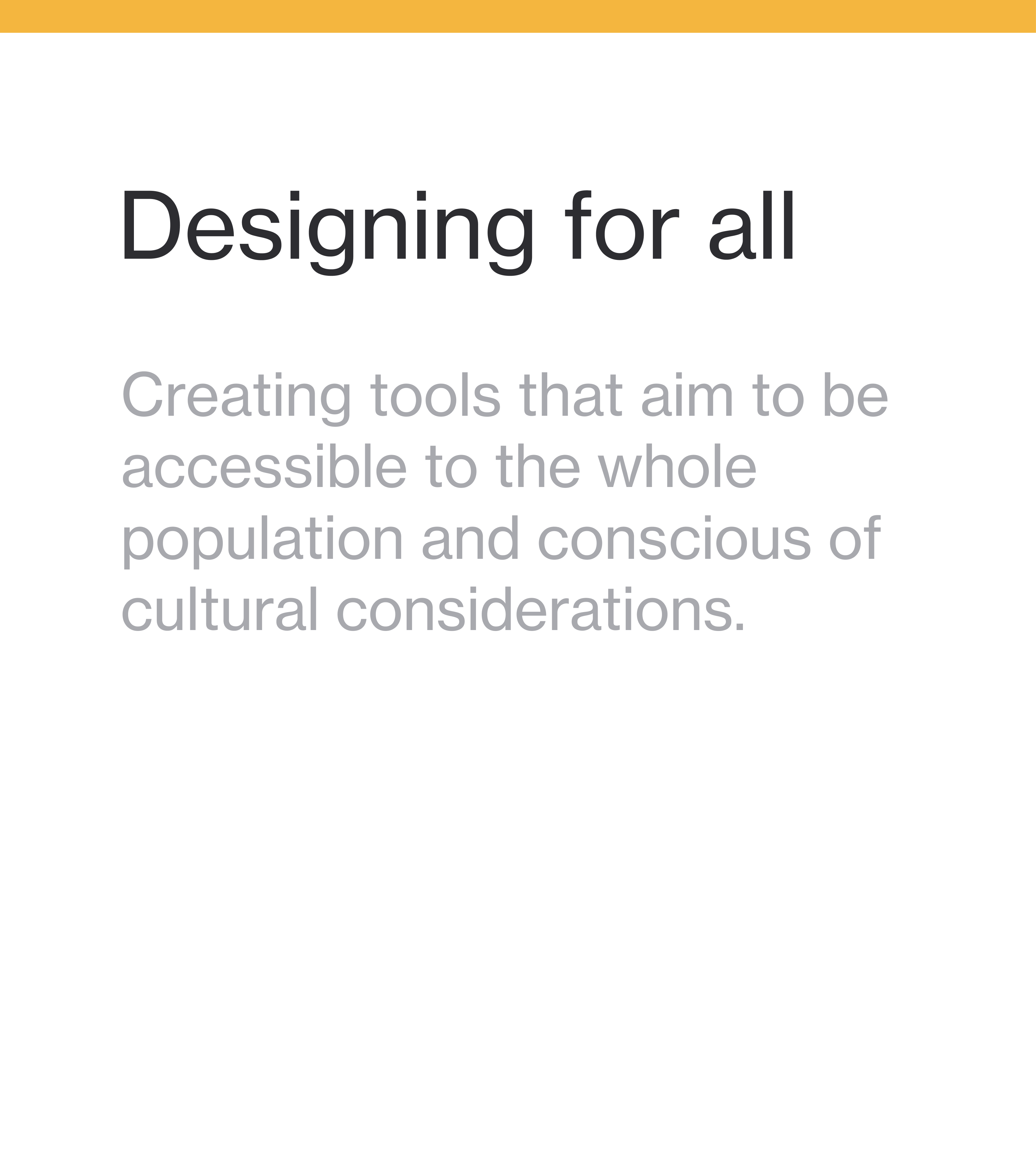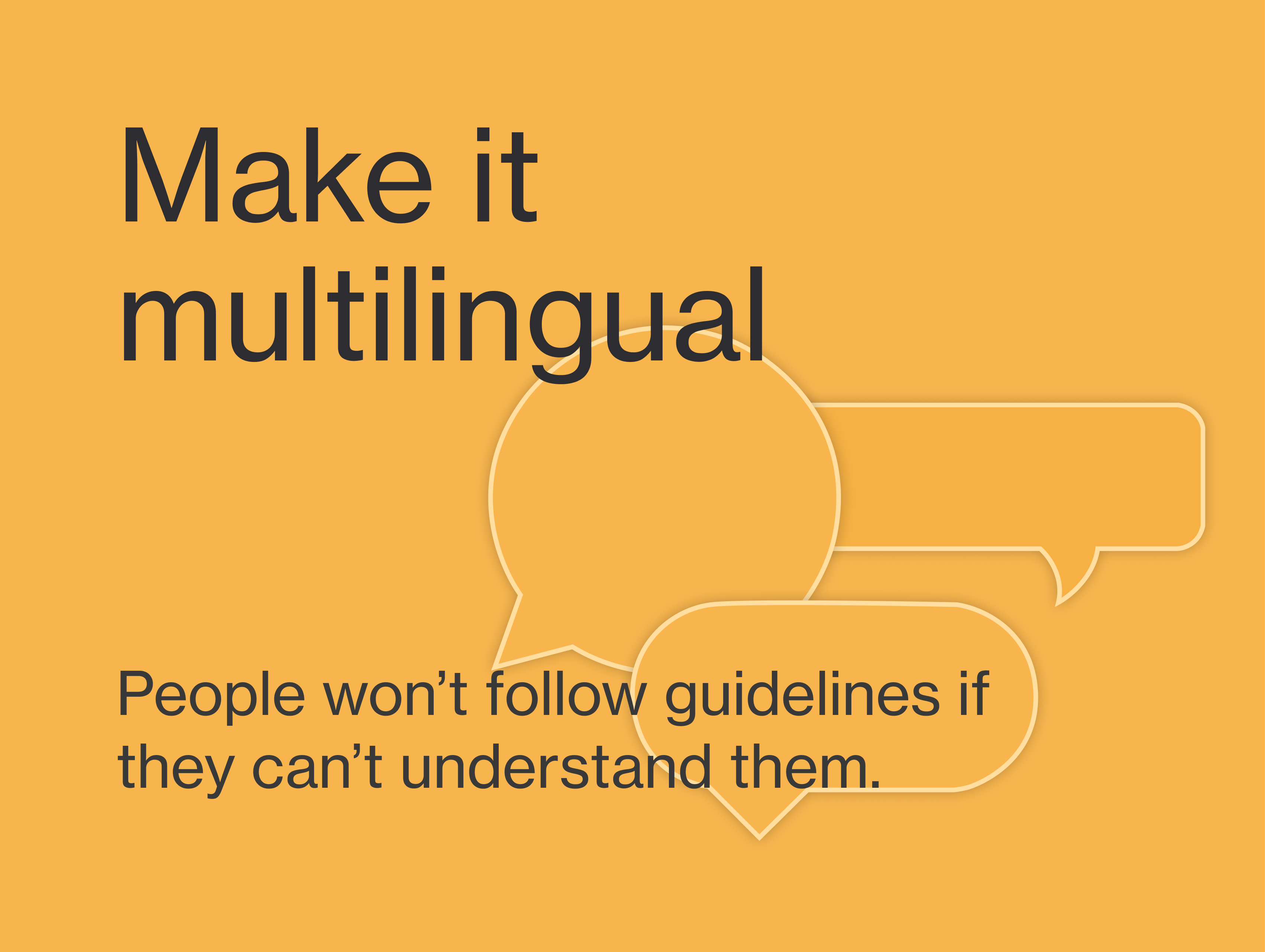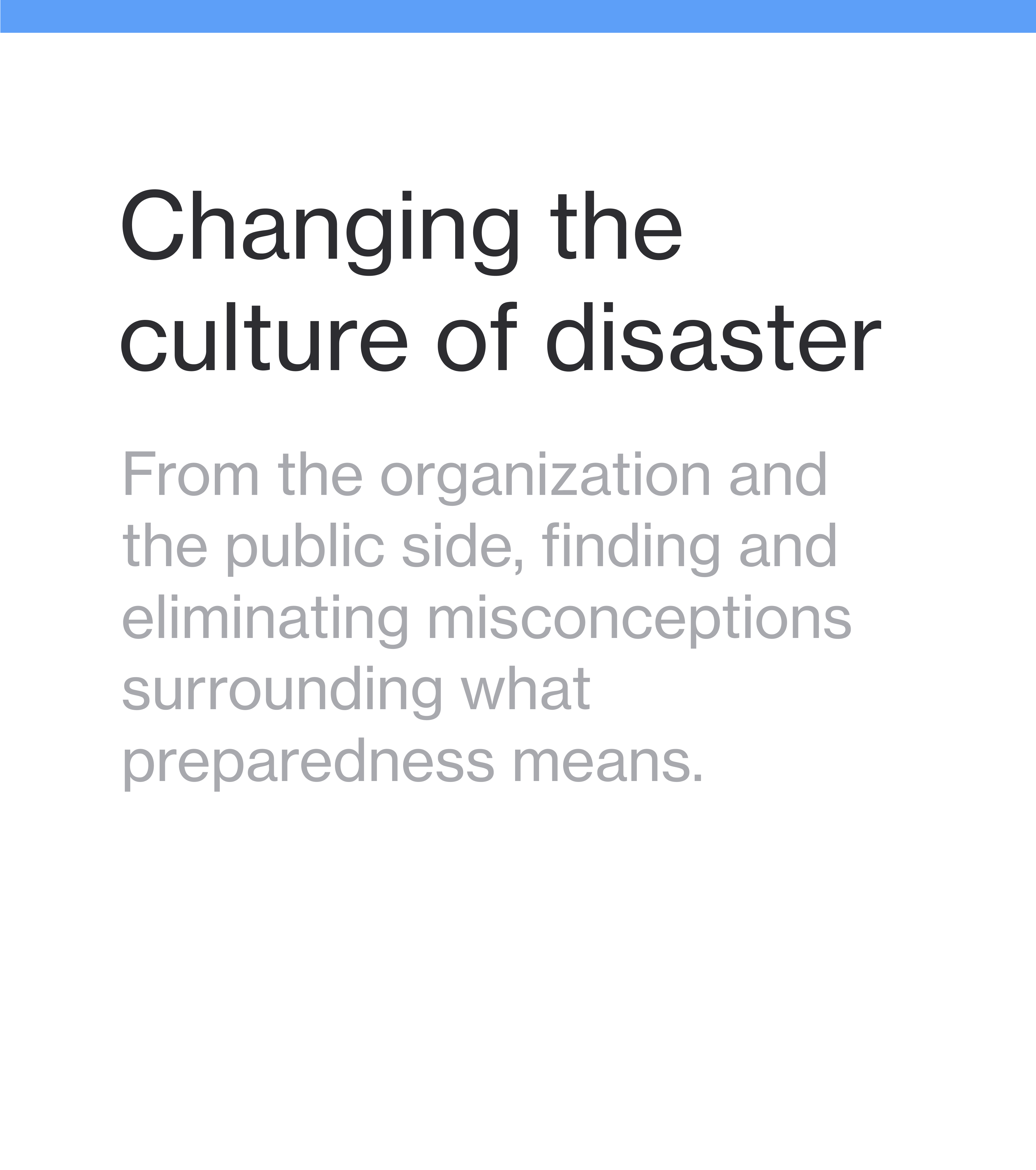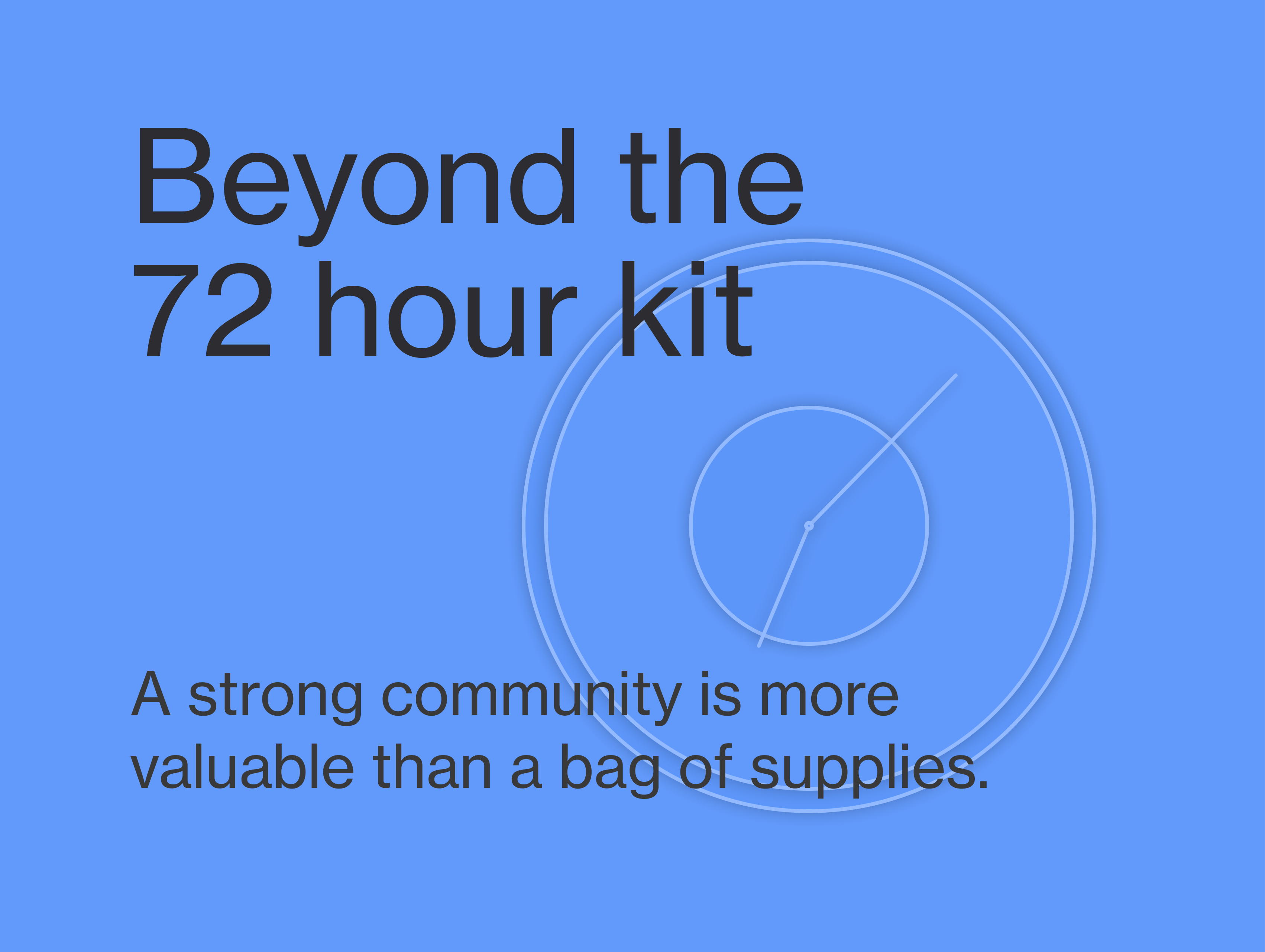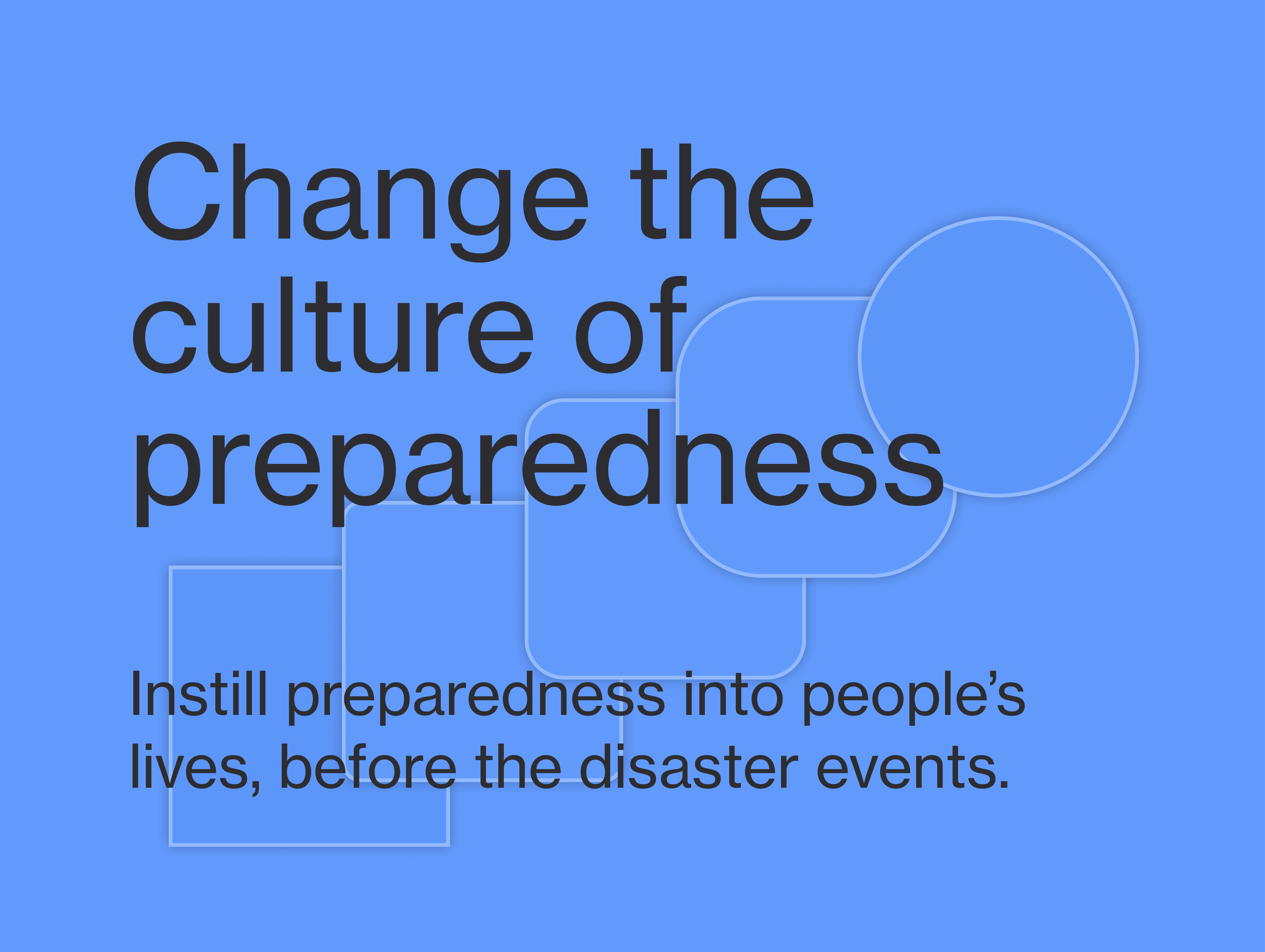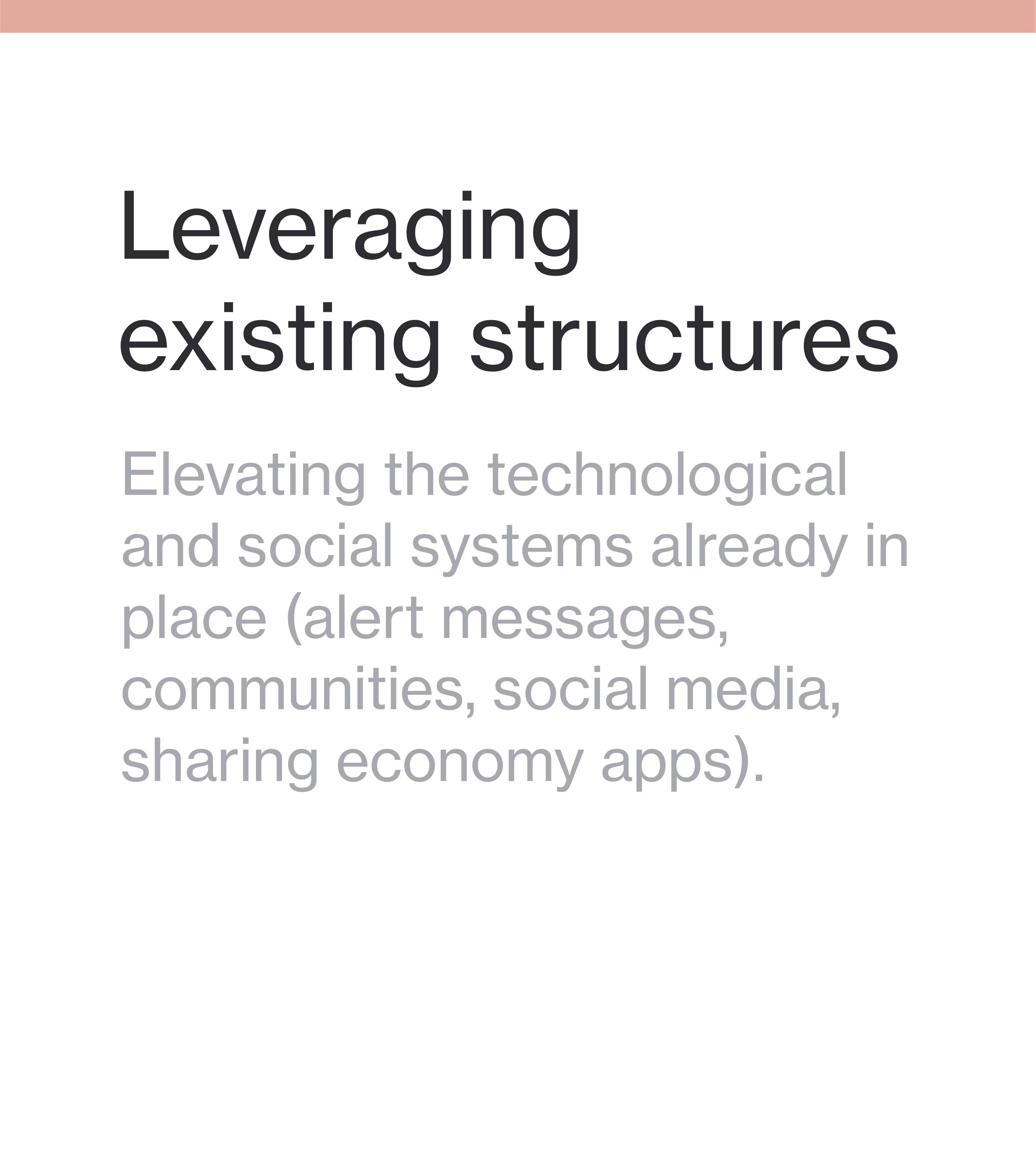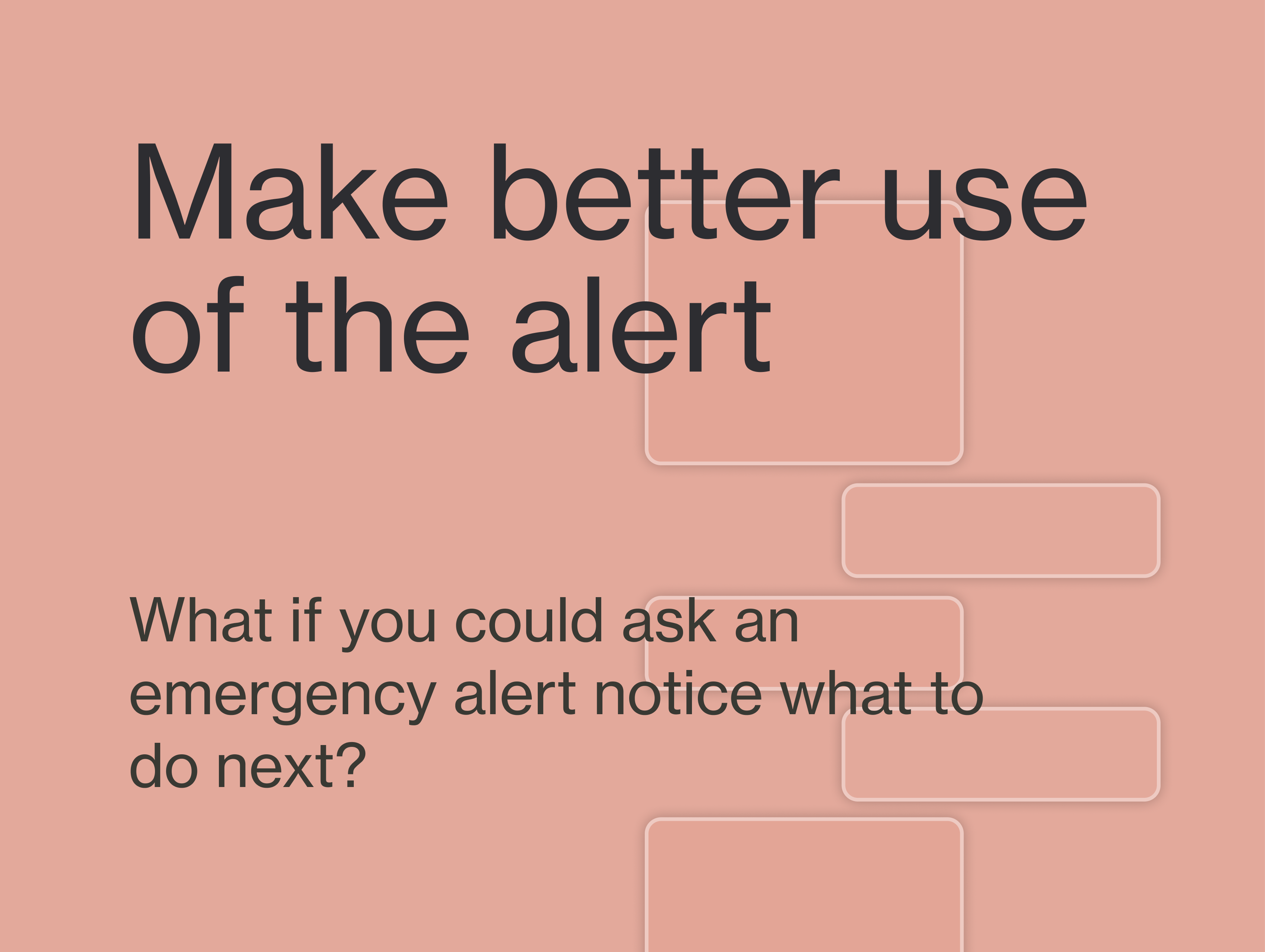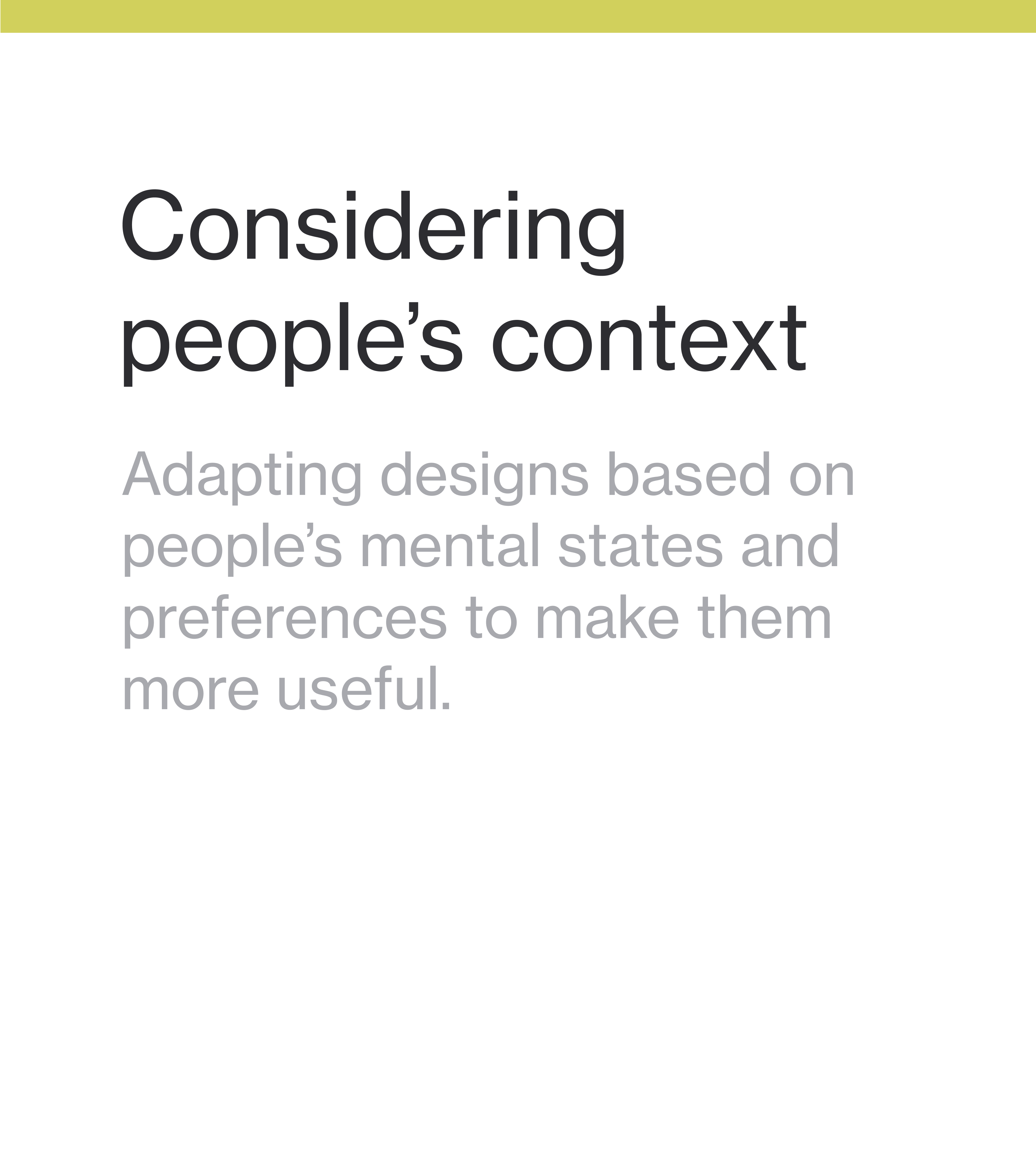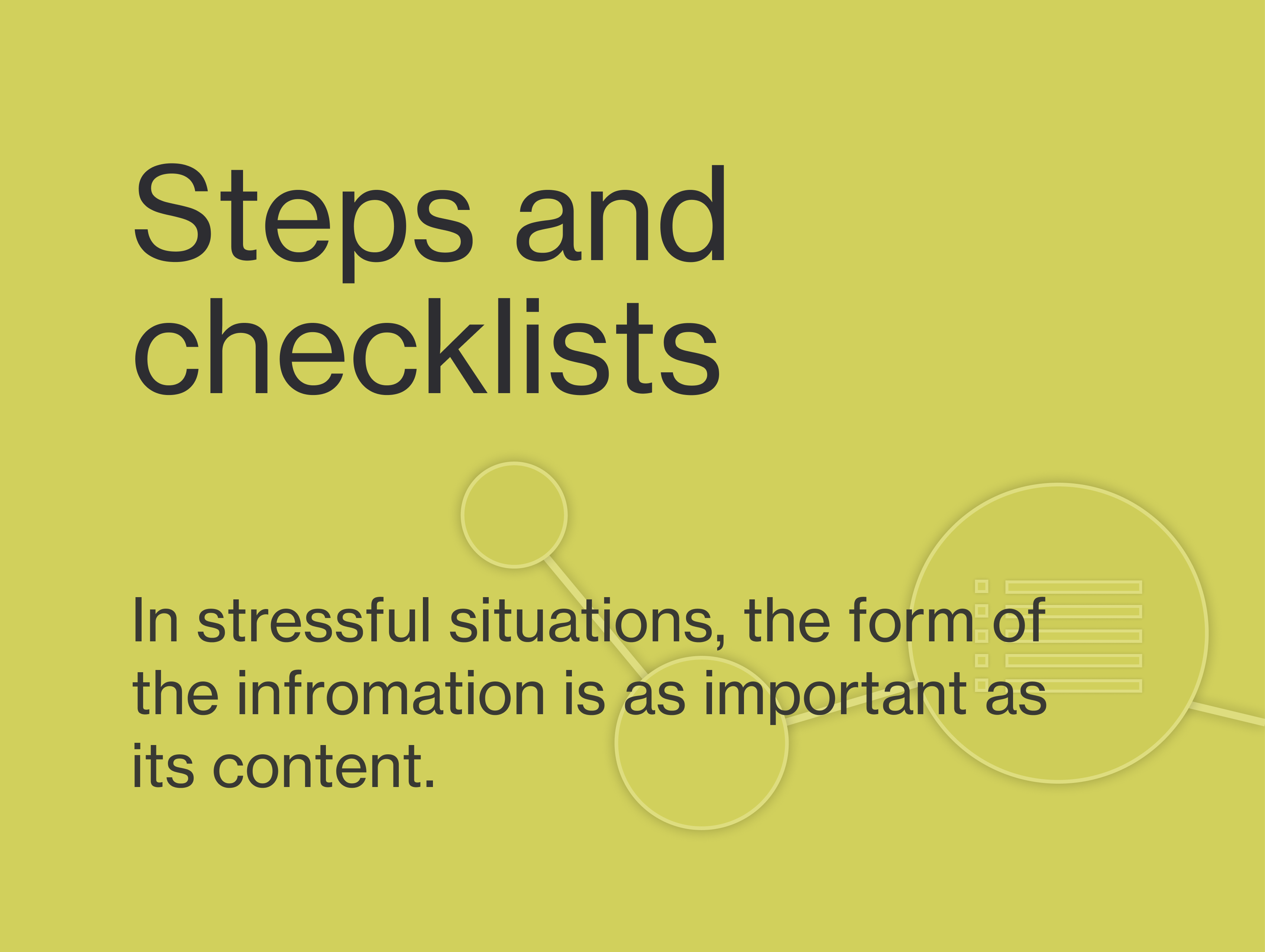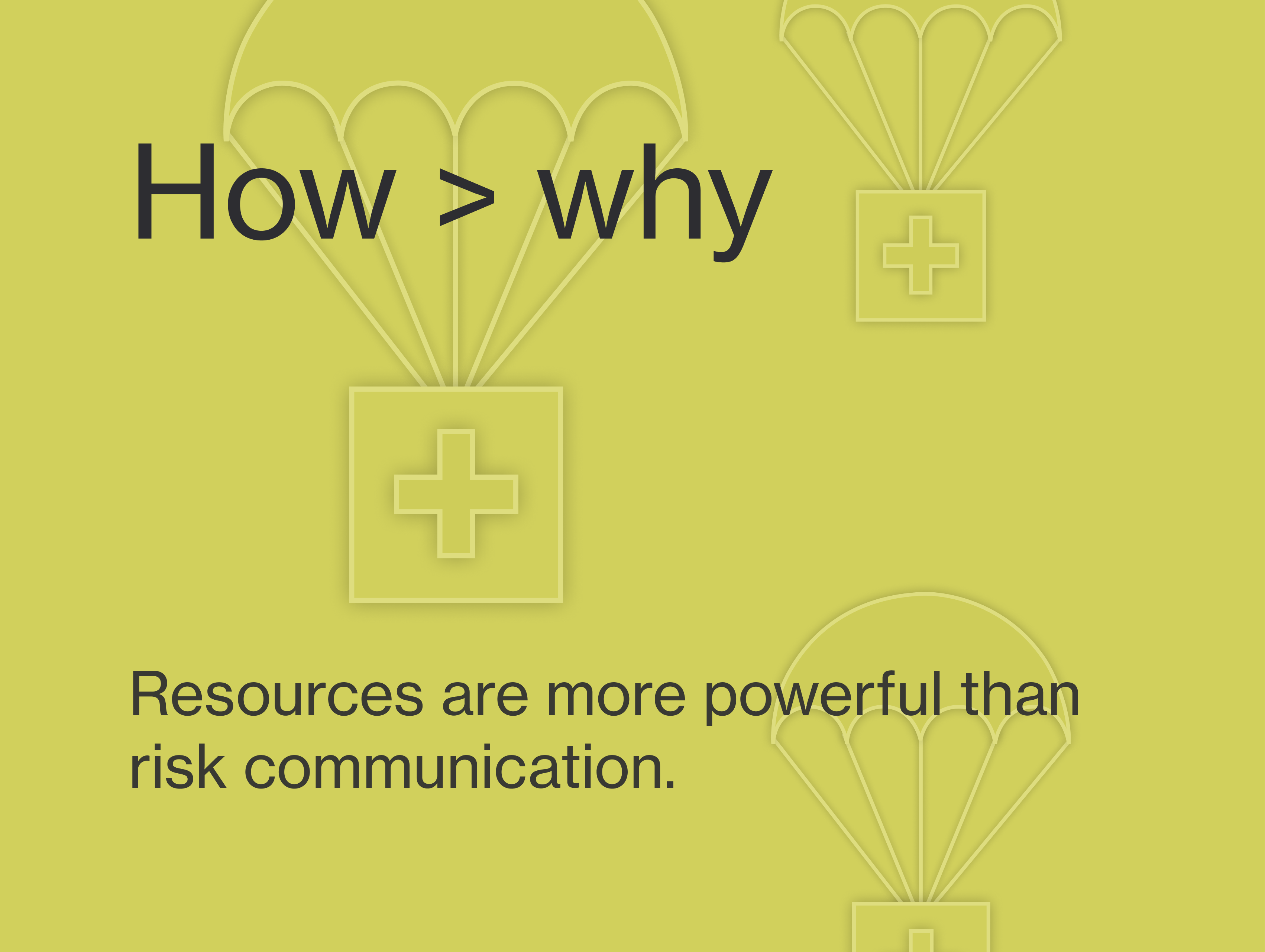Designing for all
Use the right words
Communicating clear messages to a large audience starts with using the right words. Emergency responders jargon and technical words aren’t effective, especially when immediate action is required. It’s also important consider how different groups interpret certain language and adjust accordingly.
Examples
______
Rephrasing “shelter”
Instead we chose to shift the wording to “your local evacuation centre” emphasizing the support of their local community.

De-emphasize “risk”
“At risk” means very different things to different people. This means recipients will react unpredictably to risk-focused emergency alerts.
Instead of outlining the hazards of the emergency, we chose to focus on immediate steps to mitigate them.
Insights
______
“The City was sending out notifications instructing people to shelter-in-place, but many people didn’t understand what that meant.”
Katia Tynan, City of Vancouver, 2018
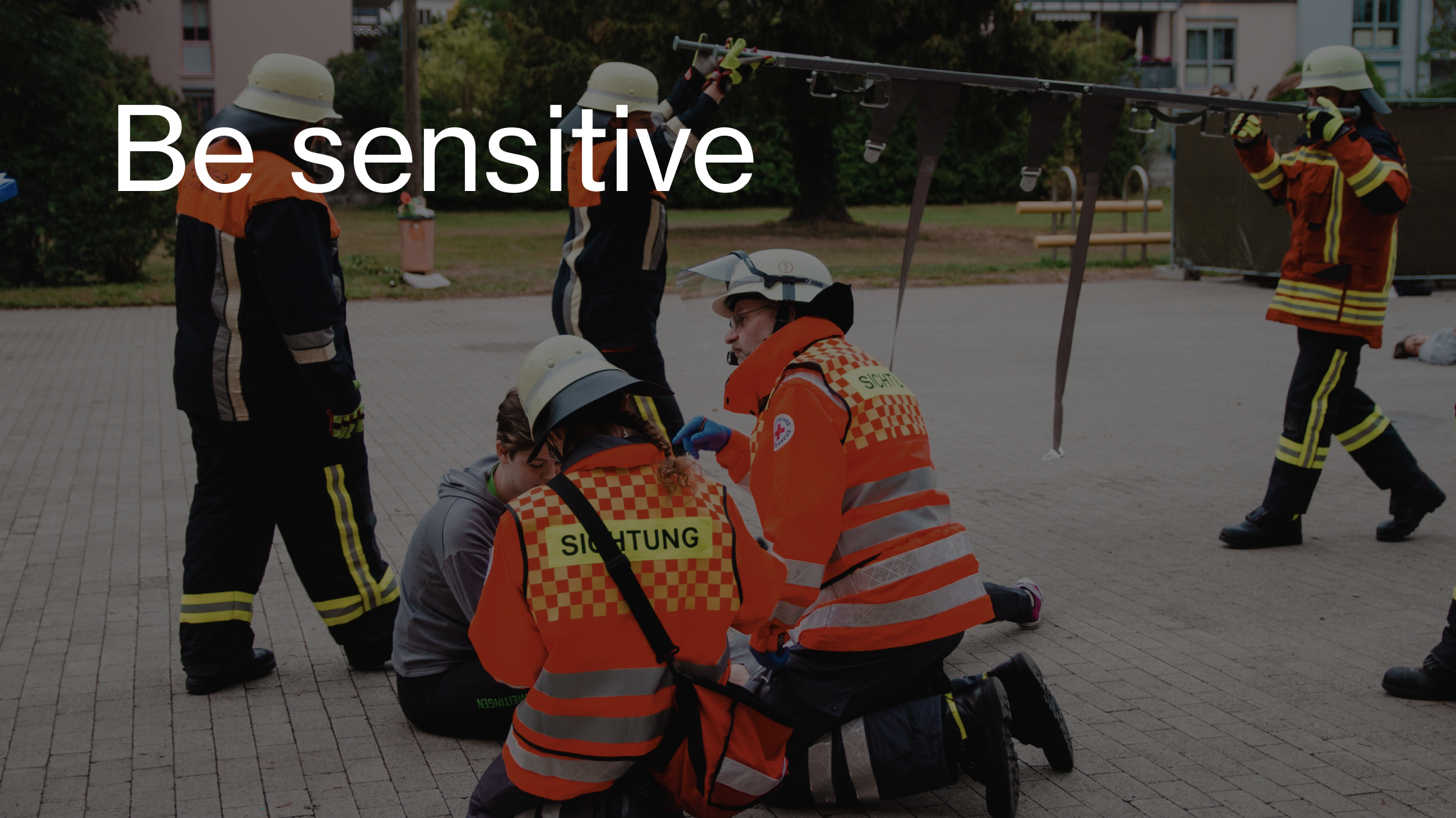
“Another key evacuation-related factor cited heavily was communication; respondents referenced hostile communications, the need for RCMP sensitivity training and the need to provide evacuees with regular updates.”
BC Flood and Wildfire Review, 2018
BC Flood and Wildfire Review, 2018

“Members of First Nations communities noted the parallels between the temporary lodging and the experience of residential school survivors.
The resulting mental health implications of the triggering effects from this lodging were emphasized, as was the need for general mental health supports during emergency.
Finally, respondents noted the generally poor treatment of First Nations evacuees throughout the emergency management response process.”
BC Flood and Wildfire Review, 2018
The resulting mental health implications of the triggering effects from this lodging were emphasized, as was the need for general mental health supports during emergency.
Finally, respondents noted the generally poor treatment of First Nations evacuees throughout the emergency management response process.”
BC Flood and Wildfire Review, 2018
